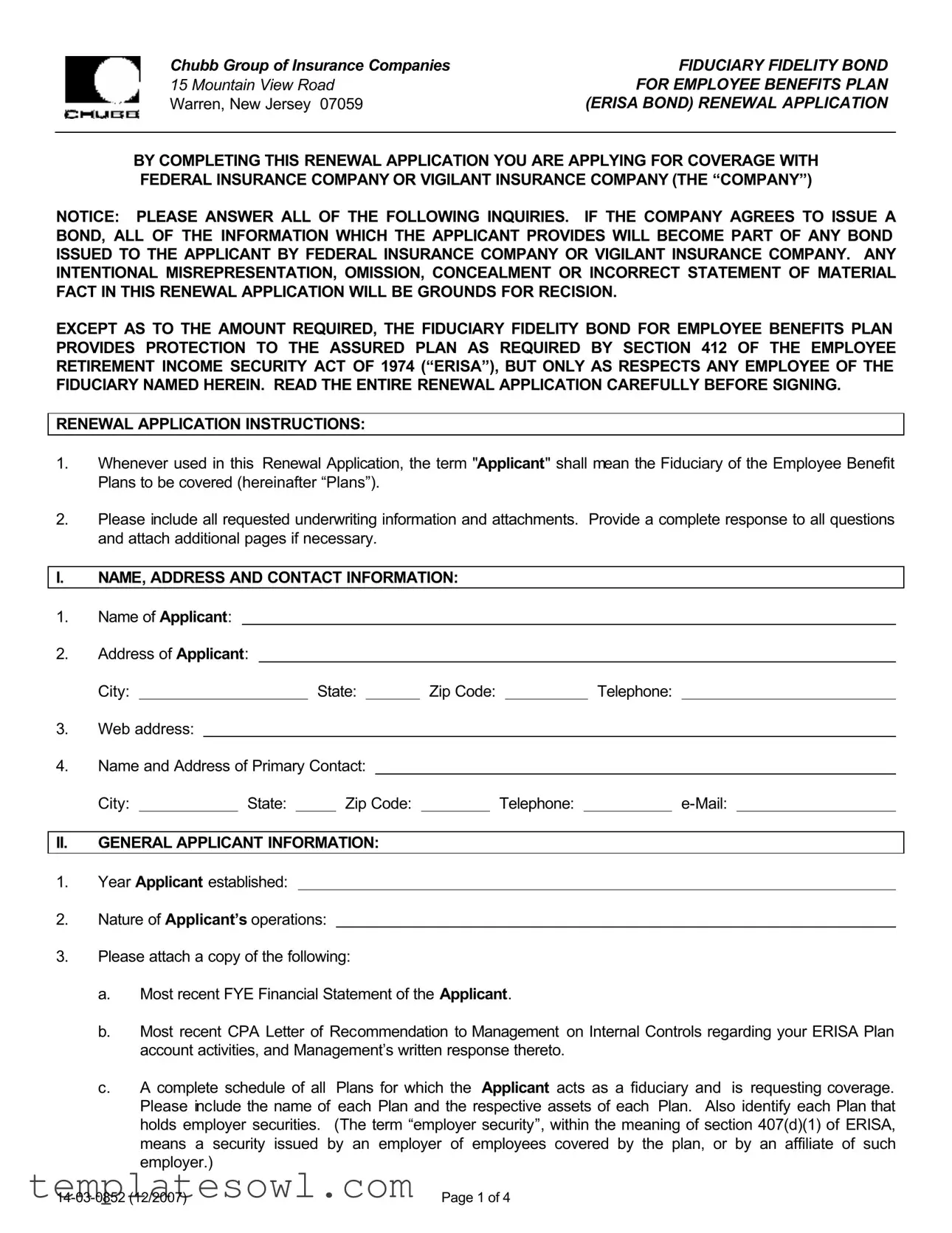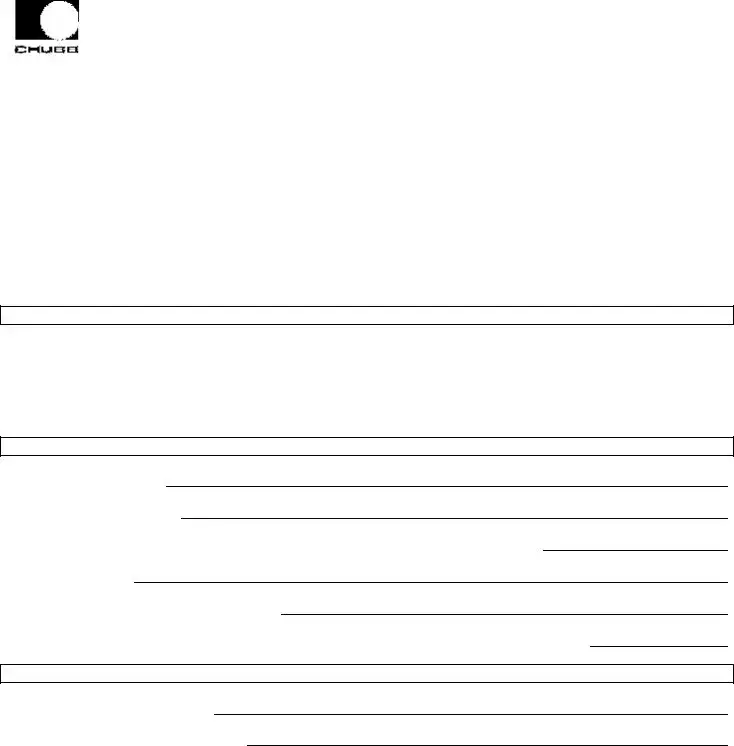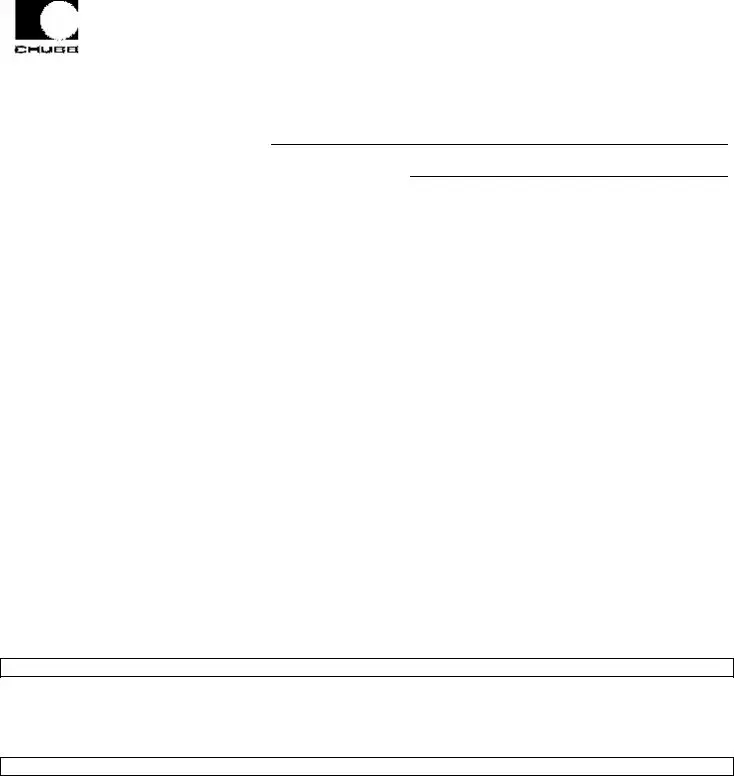Chubb Group of Insurance Companies |
FIDUCIARY FIDELITY BOND |
15 MOUNTAIN VIEW ROAD |
FOR EMPLOYEE BENEFITS PLAN |
Warren, New Jersey 07059 |
(ERISA BOND) RENEWAL APPLICATION |
|
|
The information requested in this Renewal Application is for underwriting purposes only and does not constitute notice to the Company under any policy of a claim or potential claim.
Notice to Arkansas, Louisiana, Maryland, Minnesota, New Mexico and Ohio Applicants: Any person who, with intent to defraud or knowing that he/she is facilitating a fraud against an insurer, submits an application or files a claim containing a false, fraudulent or deceptive statement is, or may be found to be, guilty of insurance fraud, which is a crime, and may be subject to civil fines and criminal penalties.
Notice to Colorado Applicants: It is unlawful to knowingly provide false, incomplete or misleading facts or information to an insurance company for the purpose of defrauding or attempting to defraud the company. Penalties may include imprisonment, fines, denial of insurance, and civil damages. Any insurance company or agent of an insurance company who knowingly provides false, incomplete, or misleading facts or information to a policy holder or claimant for the purpose of defrauding or attempting to defraud the policy holder or claimant with regard to a settlement or award payable from insurance proceeds shall be reported to the Colorado Division of Insurance within the Department of Regulatory agencies.
Notice to District of Columbia Applicants: WARNING: It is a crime to provide false or misleading information to an insurer for the purpose of defrauding the insurer or any other person. Penalties include imprisonment and/or fines. In addition, an insurer may deny insurance benefits if false information materially related to a claim was provided by the applicant.
Notice to Maine, Tennessee, Virginia and Washington Applicants: It is a crime to knowingly provide false, incomplete or misleading information to an insurance company for the purpose of defrauding the company. Penalties may include imprisonment, fines or a denial of insurance benefits.
Notice to Florida and Oklahoma Applicants: Any person who, knowingly and with intent to injure, defraud or deceive any employer or employee, insurance company, or self-insured program, files a statement of claim containing any false or misleading information is guilty of: a felony (in Oklahoma) or a felony of the third degree (in Florida).
Notice to Kentucky Applicants: Any person who, knowingly and with intent to defraud any insurance company or other person files an application for insurance containing any false information, or conceals for the purpose of misleading, information concerning any material fact thereto, commits a fraudulent insurance act which is a crime.
Notice to New Jersey Applicants: Any person who includes any false or misleading information on an application for an insurance policy is subject to criminal and civil penalties.
Notice to Oregon and Texas Applicants: Any person who makes an intentional misstatement that is material to the risk may be found guilty of insurance fraud by a court of law.
Notice to Pennsylvania Applicants: Any person who knowingly and with intent to defraud any insurance company or other person files an application for insurance or statement of claim containing any materially false information or conceals for the purpose of misleading, information concerning any fact material thereto commits a fraudulent insurance act, which is a crime and subjects such person to criminal and civil penalties.
Notice to New York Applicants: Any person who knowingly and with intent to defraud any insurance company or other person files an application for insurance or statement of claim containing any materially false information, or conceals for the purpose of misleading, information concerning any fact material thereto, commits a fraudulent insurance act, which is a crime and shall also be subject to: a civil penalty not to exceed five thousand dollars and the stated value of the claim for each such violation.




